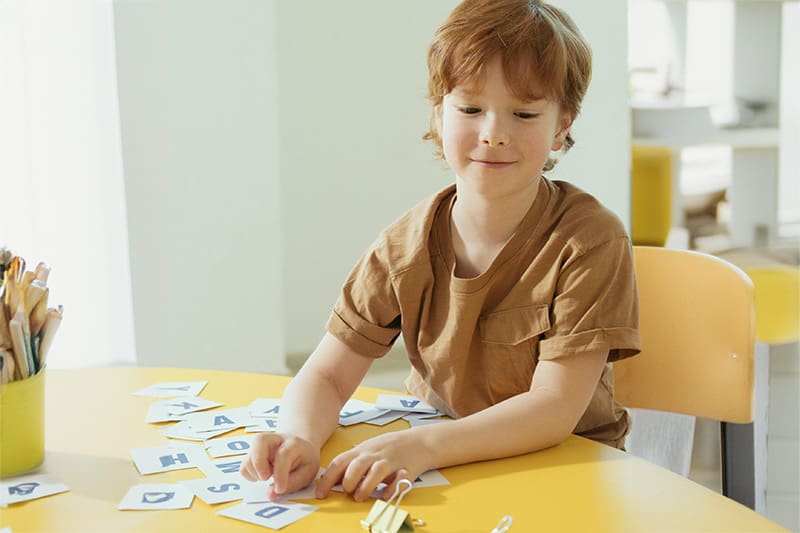The /t/ sound and the /d/ sound are very similar because they are both made with the same positioning of the mouth. To say either sound, simply put the tip of your tongue on the small ridge just behind your teeth. Both sounds are stop consonants, which means that they are produced when air that is pushed through the mouth is stopped by the tongue and then released. The difference is that /t/ is an unvoiced sound, meaning that what you hear comes only from that release of air instead of from the vocal cords.
Most children begin to pronounce the /t/ sound at around 2 years of age and are able to use it successfully by age 4. If your child is past this age and still has difficulty making the /t/ sound, it is highly recommended that you seek the help of a certified children’s speech-language pathologist to help steer your child back on track. The sooner you are able to solve a minor issue, the easier it will be to fix and the less likely it will go on to affect other areas of your child’s speech.
Whether you are interested in tracking their progress and development or you are simply looking for ways to help stimulate your little one’s articulation, here are some fun and interactive speech therapist-approved activities to try at home with your child to help them with the /t/ sound in particular:
- Verbal cues
When you practice focusing on specific sounds with your child, it is helpful for them to have a clear idea of what it is you want them to focus on. Begin by repeating the /t/ sound by itself slowly and distinctly for your child: “/t/, /t/, /t/.” Exaggerate the sound and the movements of your mouth as you pronounce it so that she may imitate your example. Once your little one can easily repeat the /t/ sound back to you, repeat the process with simple syllables created by adding vowels to the /t/ sound. Use “ta, ta, ta,” “te, te,te,” or “to, to,to,”. After she masters these easy syllables, then move on to small words, phrases, and sentences. This process will take time, so be patient with your child and be sure to reward each success.
- Visual Cues
The important part of the /t/ sound is tapping and releasing the tip of the tongue to the correct spot on the roof of the mouth while making the sound. Use a little hand motion every time you make the sound to visually help your child remember to do this. Put your thumb and your first finger near your mouth and tap them together while you make the sound, so that the tip of your fingers meet and release the at the same time as your tongue hits the roof of your mouth. Have your child do the same with his fingers as he pronounces the sound.
- Tactile Cues
Some children have difficulty finding the right spot on the roof of their mouth or their tongue hasn’t developed strong enough muscles to get it there every time. A great solution to this is to put a little dab of peanut butter or cream cheese on the little ridge just behind their front teeth and then ask them to touch it with the tip of their tongue. This trains their tongue to find the right spot for the /t/ sound. Another way to strengthen the tongue is to put a cheerio in the same spot on the roof of your little one’s mouth and ask him to hold it there with his tongue for five seconds. After the time is up, he gets to eat it. Mmm, tasty!
- Awesome /t/ Activity
Because the tongue muscles are so important to correctly articulating the /t/ sound, it’s important to make sure your kiddo’s are fully developed. Make these exercises fun by asking your child to hold a cheerio or small piece of candy up to their alveolar ridge (the area on the roof of your mouth right behind the teeth) with their tongue. Count to ten out loud. Once your child has held it up for ten full seconds, she can eat the snack.












